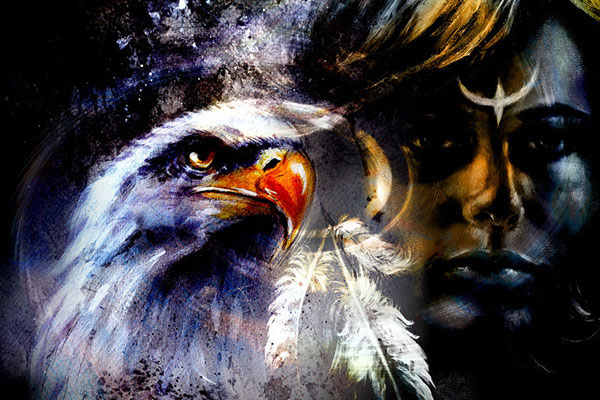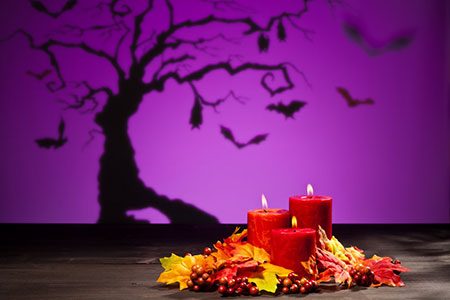traditions
Let Us Make Strong Strides Into The Future
 Here in Canada, the days are now getting much longer, the weather is turning warmer, and the trees are in full bloom. Gorgeous flowers are starting to take hold for the summer and the little birds start their incessant chirping at 4 am as the skies start to lighten.
Here in Canada, the days are now getting much longer, the weather is turning warmer, and the trees are in full bloom. Gorgeous flowers are starting to take hold for the summer and the little birds start their incessant chirping at 4 am as the skies start to lighten.
What a beautiful time of celebration this time of the year is, with Pride Month, Father’s Day, and the Summer Solstice all being recognized, among so many other events around the world. It’s also my aunt’s 96th birthday, so that is of itself a reason for our family to rejoice.
Now is a time of nourishment, growth and abundance. Nature gives us so much to see and hear. We are enjoying maximum daylight, as the solstice grows near, surrounding us with warmth and energy. Let’s revel in the beauty that surrounds us, regardless of where we find ourselves or the circumstances we are currently navigating.
We should also take some time to honor those brave leaders of the past and present who have forged paths for others to follow, in spite of insurmountable odds. We can salute them for effecting lasting change and support them in ongoing pursuits for liberty and justice around the world.
The recent celebration of Father’s Day alsoreminded me that we must salute our fathers and forefathers, and those who have become father figures to us. When we think of fathers, we sometimes think of their traditional roles from back in the day as leaders of the family, sole breadwinners, arbiters of sibling arguments, and ultimate disciplinarians. It wasn’t cool for fathers to show emotion or tenderness, far less cry, and, of course, they were always right, even when they were not.
Healing The Karmic Patterns Of Ancestral Trauma
 Sometimes during meditation, I recall past events and childhood memories that had been long forgotten. A recent vision, for example, took me back to the home I was raised in. But the scene was one I do not remember.
Sometimes during meditation, I recall past events and childhood memories that had been long forgotten. A recent vision, for example, took me back to the home I was raised in. But the scene was one I do not remember.
I saw myself as a little girl, around three years old, and members of my mother’s family were visiting us. Everyone was singing and playing instruments together. I saw myself watching them and enjoying the music, but then felt guided to look diagonally upward to another scene happening simultaneously.
In the other scene I saw my ancestors; at least that is what I concurred because they were going back in a line. Behind my great grandmother, who was playing the piano, there were people who I sensed to be her parents, and then her grandparents behind them, and so on.
In that glimpse into the distant past, I observed how the behavioral patterns and family dynamics of our ancestors, some of it dysfunctional and unhealthy, had become the patterns of my family. I also saw how these patterns were passed on to me and how it has shaped the patterns in my life and my own family to this day.
I then invoked the Heavenly Light to wash over all of us: myself and my family, my living relatives, all my ancestors who came before us, as well as all of our future descendants. I prayed that all of the disharmony in my family lineage be healed, and also that any other families and individuals we had disharmonious interactions and relationships with be healed too.
In Hawaiian culture this kind of healing prayer is known as Ho’oponopono. It is an ancient spiritual practice of reconciliation and forgiveness, which in English literally translates to ‘to make right,’ or ‘to make good.’ Ho’oponopono is essentially a personal responsibility and forgiveness prayer or ritual to heal, among other things, feuding families and ancestral trauma. When practiced repeatedly, it is said to balance out karma. I do believe in praying for those who wronged or harmed us, because within their healing we find our own as well.
It’s Always Darkest Before The Dawn
 Concepts of the Divine, with an ever-changing definition, have been part of the human experience since the beginning of time. Most of the world’s people throughout history continue to recognize a place for divinity in life.
Concepts of the Divine, with an ever-changing definition, have been part of the human experience since the beginning of time. Most of the world’s people throughout history continue to recognize a place for divinity in life.
Our spiritual journey, throughout the ages, has been steeped in mystery and often, superstition and dogma. Organized religions have historically attempted to answer deep questions, and have sometimes provided comfort and solace to people during times of upheaval.
However, the most important questions have been left unanswered. For example, we know precious little about ancient, prehistoric cultures that worshiped the Sacred Feminine. Earliest recorded myths and legends have been lost or destroyed, and most stories that remain portray not only a divine battle of the sexes, but a difficult, contentious relationship between the divine and human beings.
The Greek gods, for example, were capricious and mean-spirited. They plotted all sorts of obstacles that humans either did, or did not overcome in order to survive. Guile and trickery also set the stage for many myths from various indigenous cultures, in early human-god myth making.
With the rise of monotheistic religions, mankind was taught to blindly accept whatever lot the almighty doled out, fairly or unfairly. Emphasis was placed on omnipotent power, absolute authority and greatness, beyond any human capacity to comprehend, much less participate in.
These attitudes toward humans’ relationship with God have been echoed in authoritarian family and community practices, and even the military forces of nations. God became the ‘Almighty Father in the Sky’ issuing strict orders. There was no room for questioning in an authoritarian family or society. “Because I said so,” was reason enough to blindly obey. Punishment for infractions or disobedience was swift and sure.
Our Totems And Spirit Animals
 It is my belief that we all have animal spirit guides that guide and support us along our life journey.
It is my belief that we all have animal spirit guides that guide and support us along our life journey.
Each spirit animal represents a different aspect of life. Some show up when we need their particular energy or receive their symbolic message, while others show up consistently throughout our lifetime. These animals, birds, mammals, reptiles, and even fish, are like our personal totems.
I have three main spirit totems: the eagle, the red tail hawk, and the owl. Each has shown up consistently in my life, especially when there is a time of adversity, grief, or crisis occurring.
I was made of aware of these three totems early in my life, when I consulted with an indigenous elder. He gave me my spiritual name: Soaring Free. I instantly loved my name. It represents the proud eagle that soars on high, the red tail hawk that soars in broad circles high in the air, and the owl that is wise and roams free.
The Eagle
After my parents passed away, I was cleaning their house. Not only was I grieving at the time, I was also very distraught, having to decide whether to sell their home or not. I was not at all sure if it would be the right thing to do.
Then, I asked my angels to give me a sign. Moments later, as I looked down towards the lake, there were two beautiful bald eagles sitting on the edge of a tree branch.
Bittersweet Is The Fall
 Bittersweet is the fall in Maine. Literally. We have a vine here known as the ‘asiatic bittersweet’ (celastrus orbiculatus) that produces attractive red berries. They are yellow at first, but as they mature the outer shell cracks open to expose a magnificent crimson berry with a yellow coat.
Bittersweet is the fall in Maine. Literally. We have a vine here known as the ‘asiatic bittersweet’ (celastrus orbiculatus) that produces attractive red berries. They are yellow at first, but as they mature the outer shell cracks open to expose a magnificent crimson berry with a yellow coat.
Crafters here in New England traditionally use this vine to make holiday wreaths and decorate their homes. It also adorns the roads of Maine with the combination of fall leaves and green of pine trees.
But the bittersweet vine does its name justice in both sweet beauty and bitterness, life and death, because it is not only adored for its versatility as autumn décor this time of year, but it is also widespread, severely invasive and destructive. It suffocatingly twines high up around trees and sprawls over lower plants and vegetation.
It is not a native plant to the region and was originally brought here as an ornamental plant. As the vine begins to spread and grow to the top of trees it becomes the vine of death for the tree as it covers it completely. A bitter vine.
The fall is indeed a bittersweet time of the year. The natural cycle of life and death. The bittersweet time of year is the time to harvest food for the long winter ahead. Get our homes ready for the snow, darkness, and ice of winter.
In Maine the old timers say ‘button up the house’ for winter. The sweet part is people are thinking of the holidays ahead and gatherings with family and friends. There are traditional recipes. Who will make the best pie? Everyone has a favorite. Whose gravy is the most delicious? It’s a time of gratitude for everything that is good in life.

